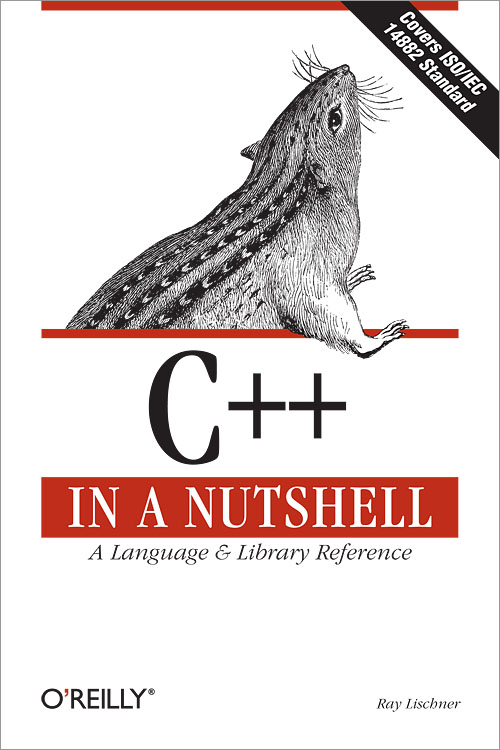Chapter 1 : Language Basics
-Compilation Steps
-Tokens
-Comments
-Character Sets
-Alternative Tokens
-Trigraphs
Chapter 2 : Declarations
-Declarations and Definitions
-Scope
-Name Lookup
-Linkage
-Type Declarations
-Object Declarations
-Namespaces
Chapter 3 : Expressions
-Lvalues and Rvalues
-Type Conversions
-Constant Expressions
-Expression Evaluation
-Expression Rules
Chapter 4 : Statements
-Expression Statements
-Declarations
-Compound Statements
-Selections
-Loops
-Control Statements
-Handling Exceptions
Chapter 5 : Functions
-Function Declarations
-Function Definitions
-Function Overloading
-Operator Overloading
-The main Function
Chapter 6 : Classes
-Class Definitions
-Data Members
-Member Functions
-Inheritance
-Access Specifiers
-Friends
-Nested Types
Chapter 7 : Templates
-Overview of Templates
-Template Declarations
-Function Templates
-Class Templates
-Specialization
-Partial Specialization
-Instantiation
-Name Lookup
-Tricks with Templates
-Compiling Templates
Chapter 8 : Standard Library
-Overview of the Standard Library
-C Library Wrappers
-Wide and Multibyte Characters
-Traits and Policies
-Allocators
-Numerics
Chapter 9 : Input and Output
-Introduction to I/O Streams
-Text I/O
-Binary I/O
-Stream Buffers
-Manipulators
-Errors and Exceptions
Chapter 10 : Containers, Iterators, and Algorithms
-Containers
-Iterators
-Algorithms
Chapter 11 : Preprocessor Reference
Chapter 12 : Language Reference
Chapter 13 : Library Reference
Appendix A : Compiler Extensions
-Borland C++ Builder and Kylix
-GNU Compiler Collection
-Microsoft Visual C++
Appendix B : Projects
-Blitz++
-Boost
-STLport
